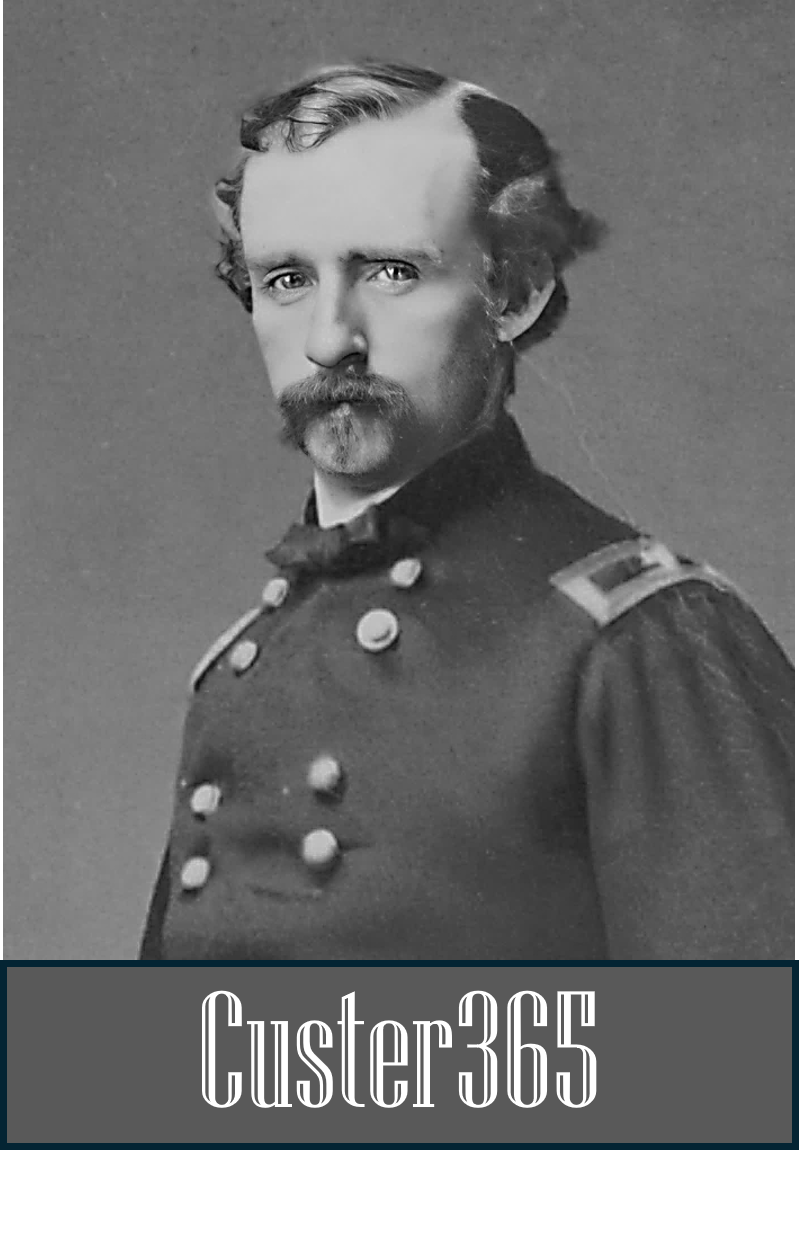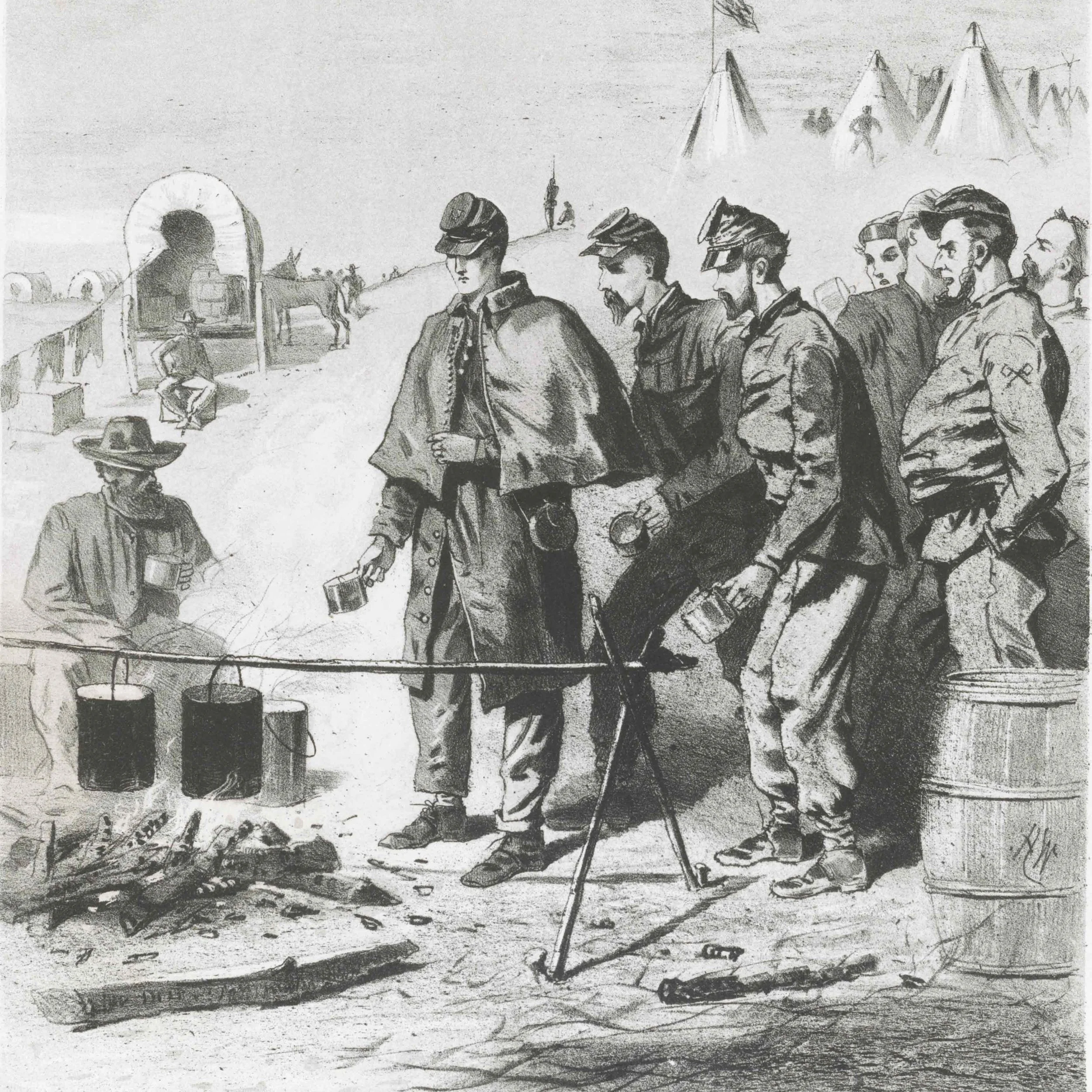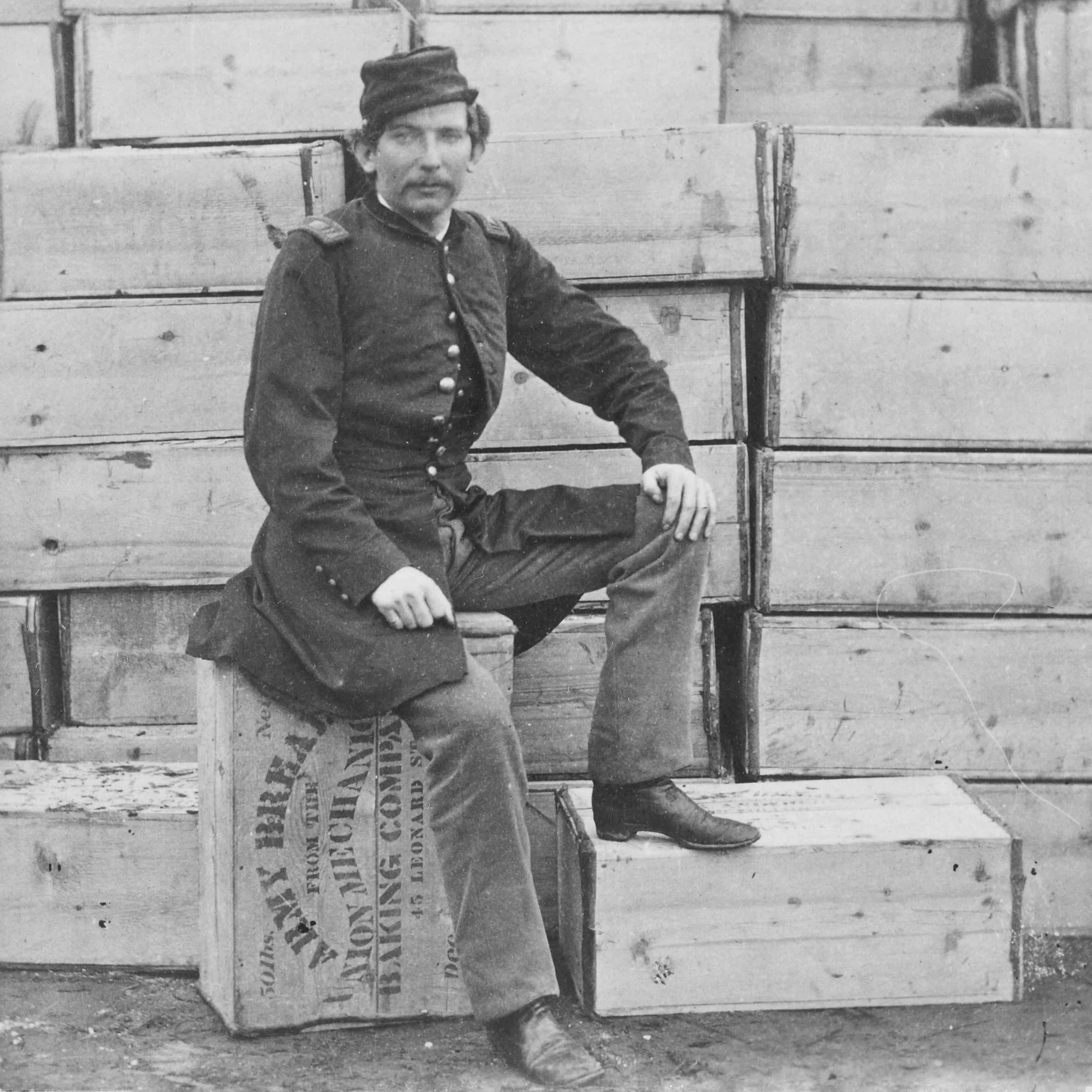OCT 7: ‘The Cooks Killed More Soldiers Than the Indians’
If a man joined the U.S. Army in the 1870s and hoped for meals cooked just like mom’s back home, the were sorely disappointed, especially at a western post.
Civil War ‘coffee call.’ (Credit; Library of Congress)
A Union colonel sits atop a crate of tried-and-true Army hardtack in 1863. (Credit: Library of Congress)
According to author David Nevin in the 1973 Time-Life book, “The Soldiers,” “Some of the bitterest soldier complaints concerned the most fundamental of human needs – food.
“Army regulations called for each company to designate privates to serve in rotation as cooks. In principle, the idea was sound: The Army wanted its men to learn to cook on post so that they could prepare their own meals in the field. But in practice the system proved dreadful. Few soldiers knew even the rudiments of cooking; not until the Indian wars were over did the Army train men to cook and assign them to serve in that capacity.”
Even if they learned how to cook, the pickings were slim. Staples included beans, hardtack, bacon, flour, coffee, coarse bread, occasional low-grade range beef and even more occasional game, plus condiments such as salt, brown sugar, vinegar and molasses. (Hardtack, by the way, is a simple, dense cracker or biscuit made from just flour, water, and salt, and is valued for its ability to last months or years without spoiling.)
One sergeant described the typical day’s meals as: “For breakfast we had beef hash, dry sliced bread (no butter) and coffee (no milk); for dinner, sliced beef, dry bread and coffee; for supper, coffee straight – just dry bread and coffee.”
A standing joke among enlisted men of that era was the cooks killed more soldiers than the Indians.



